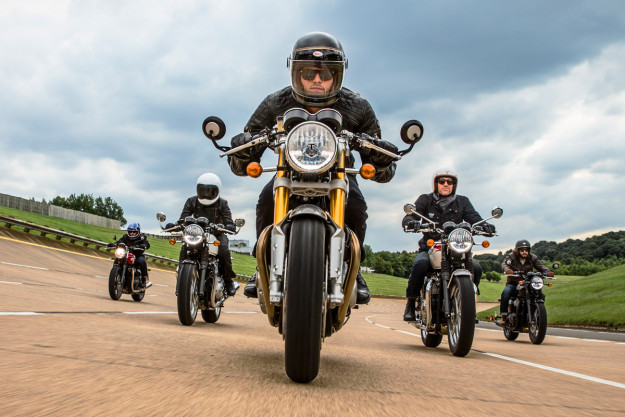
Today is one of the most critical milestones in the checkered history of Triumph Motorcycles, est. 1902. The wraps have come off the new Triumph Bonneville range, revealing a switch to liquid-cooled engines and a ground-up frame and body redesign.
This is big news for the custom industry too. The parallel twin is serviced by dozens of parts and accessory makers—and any workshop that can make a custom Bonneville stand out from the crowd is sure to have a bright future.
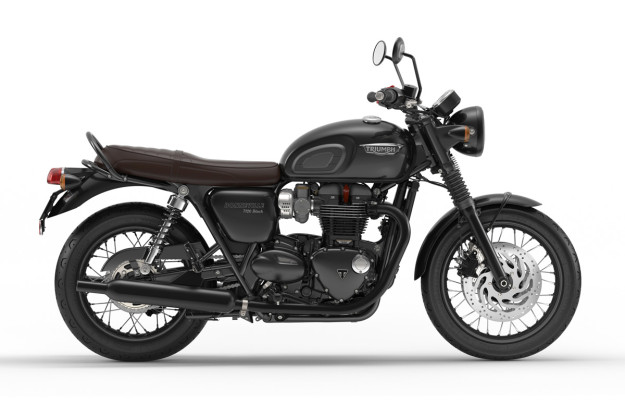
The new range sees a long overdue shift towards performance. Since 2001, Hinckley-built Bonnevilles have traded mostly on charm and nostalgia—but let’s not forget that the original ’59 Bonneville was all about speed.
It was named after the methanol-burning Thunderbird that tore across the Bonneville Salt Flats at a world-record 214 mph.
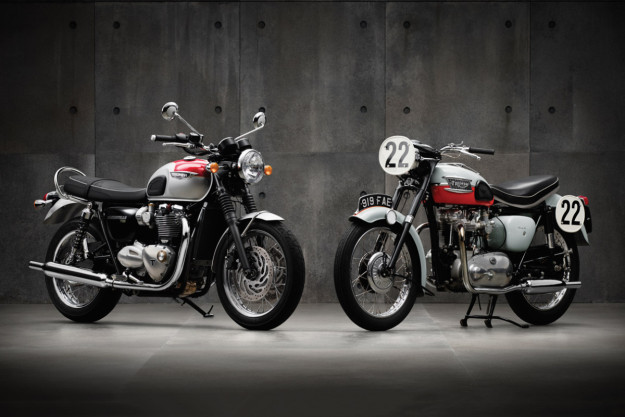
The five new machines hitting showrooms early next year won’t be setting any speed records. But the engines do have 8 valves, and substantially more power than before.
And just take a look at the range-topping Thruxton R below. It’s as close as a manufacturer can get to road-legal, homologated cafe racer perfection.
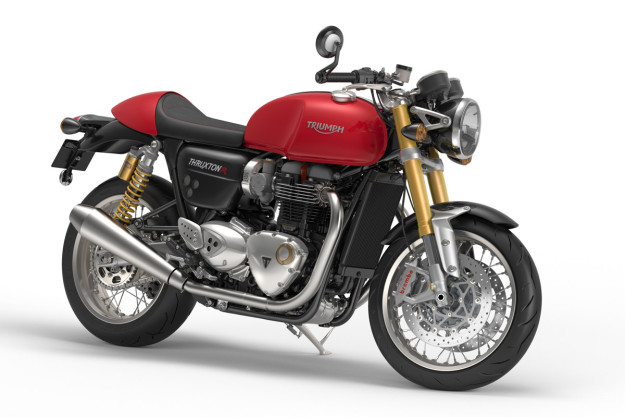
The engines come in two sizes—900 and 1200cc—with 270° firing intervals. That’s the same as the current Scrambler, which has a ‘lumpier’ and more characterful vibe than the 360° Bonneville engine. A ride-by-wire system controls the fuel injection and engine management.

There’s no word on horsepower, only torque. And no word on weight, either. So we’re guessing the new Bonnevilles are heavier than air-cooled middleweights such as the Ducati Scrambler and Moto Guzzi V7 II, and maybe even as heavy as the air-cooled BMW r NineT—which is 222 kg wet.
But the good news includes six speed gearboxes, standard ABS, and switchable traction control. Here’s the top line on the different models.
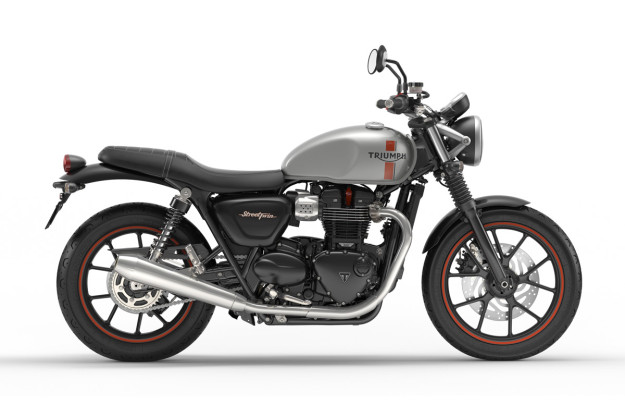
Street Twin 900cc engine | Peak torque 80Nm at 3200 rpm, 18% more than previous model | Upswept brushed stainless steel exhaust system | Reported 36% better fuel economy | Single instrument clock with digital menu | Cast black wheels | Over 150 accessories in official Triumph catalog
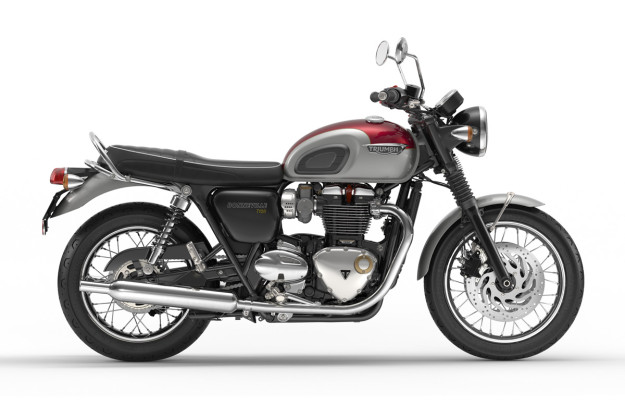
T120 and T120 Black 1200cc engine | Peak torque 105Nm at 3100 rpm, 54% more than outgoing model | Peashooter exhaust system | Road and Rain rider modes | Brushed aluminum engine covers and bronze detailing on the T120 | Black engine covers with machined aluminum detailing on the T120 Black | Three-mode heated grips standard
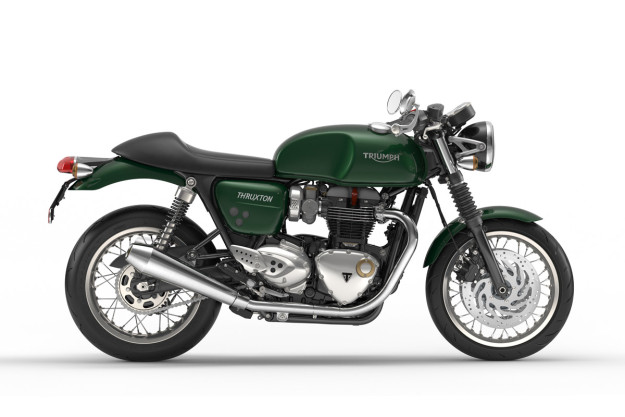
Thruxton and Thruxton R 1200cc ‘high power’ engine | Lighter crank, higher compression, different airbox | Peak torque 112Nm at 4950 rpm, 62% more than the previous generation | Twin upswept exhausts with reverse-megaphone end cans—finished in chrome on the Thruxton, and brushed stainless steel on the Thruxton R | Road, Rain and Sport rider modes | Clip-on bars, fully adjustable suspension, 17-inch front wheel for improved handling | ‘Flip top’ Monza style gas cap
The Thruxton R also gets a full suite of Brembo hardware: twin floating discs, racing monobloc calipers and a master cylinder. Suspension is via fully-adjustable Showa big piston forks and Öhlins shocks. Tires are Pirelli Diablo Rosso Corsas, and you also get a polished top yoke, an aluminum tank strap, and a clear anodized aluminum swingarm. Not much need to go to the aftermarket there.

On paper, it all sounds great. But on camera, it looks even better: Triumph’s styling department has hit a home run. The Street Twin has a bare-bones tracker vibe. The T120 has been subtly reshaped—especially the tank, which loses the pronounced hump but keeps the signature seam. And the Triumph Thruxton is pure café racer style—with the specs to match. It’s right up there with the late, lamented Ducati SportClassic.

The bikes look like they have been lightly customized already, with neat touches and sublime detailing. But Triumph knows that everyone wants something original, so they’re taking a page out of Harley’s book: we’re told that a catalog with 470 accessories is on the way.
This will include Vance & Hines exhaust systems and a 60s-style bikini fairing. Plus custom mainstays such as fender removal kits, compact blinkers, different clip-on bar configurations, and tank straps.
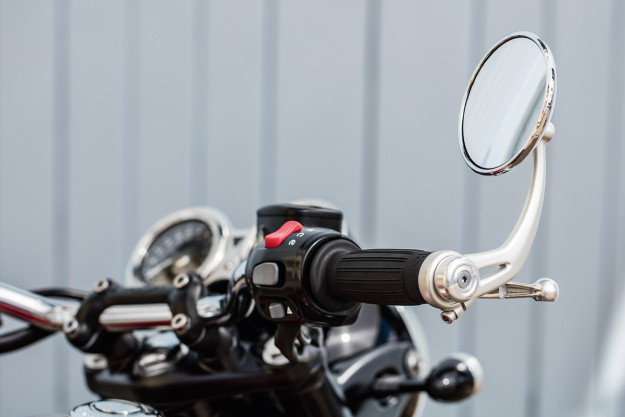
So the easy wins will no longer be there for customizers. We’re betting the focus will be on the stuff you can’t see: suspension upgrades for the lower-spec models, engine internals and ECU remaps, and weight reduction. But even then, Triumph is staking a claim: there’s going to be a track kit for the Thruxton, which uprates the engine power still further and promises ‘weight reduction’ too.
Street Twin owners will be able to fit a Scrambler or ‘Brat Tracker’ kit, and T120 owners can choose a ‘Prestige’ kit that amps up the heritage elements of the bike.

So it’ll be good news for Triumph fans when these machines hit the showrooms in early 2016. It looks like Triumph has managed to amplify the retro charm of the Bonneville, while bringing the performance up to date. And the bikes will be easier than ever to customize.
Which one would you pick?
Triumph Modern Classics | Facebook | Instagram
